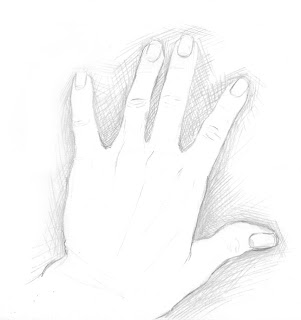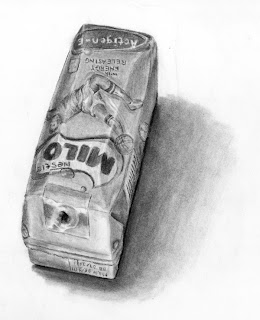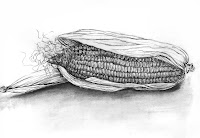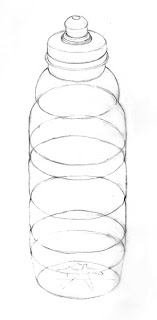 | ||||
| The hand is positive space and the rest negative space |
Looking at the negative spaces
In this section I will explain to you why learning how to draw with negative spaces are very important to your drawing.
An object is an example of a positive space, in other words it is a solid. The spaces between your objects and all the solids can create very interesting negative shapes and this is called the negative space of your drawing.Negative spaces play an important role in your drawing because they enable you to check how accurate your drawing is. They also contribute to your composition. When you make a compositional drawing you will see that negative spaces play a very important role to the space in your drawing. The more unique your negative spaces are, the more interesting your drawing will become.
How to prepare good negative spaces for your drawing
In a figure drawing, it is important for your model to give you enough negative space to make the drawing interesting. This can be achieved for example, by the model standing with one leg straight and the other bent and with one hand holding a pole and the other hand on the hip. All these negative spaces create interesting lines on your figure and makes the audience want to explore the drawing. If there is little negative space, for example the model stands with their arms next to their side and legs next to each other, the drawing can become boring or feel uncomfortable.The role of negative spaces in a composition
Negative spaces can be used in a composition to get balance in a drawing. The rule is to usually have an even number of positive and negative spaces. The negative can be a tool to create a certain mood in a drawing. A busy drawing with little negative space and a lot of positive space can be over crowded but this might be your intent. This can draw more attention to the positive space. A drawing with less positive space and more negative space can feel empty and lonely. It is up to you to decide how your drawing feels. It is important to choose your balance just right for your subject matter and the style of your drawing.How to test the forms in your drawing with negative space
When you put three balls next to each other to form a little triangle you get a funny triangle negative space. When one of the three sides of the negative space triangle is not correct and the triangle is misshapen, you know that one of the three balls is drawn wrong. This is a way in which we can use negative spaces to test whether we have drawn our forms correctly. If the triangle is right, you know that your forms are also right.Negative space is very useful in a drawing and I use it a lot in deciding how to place my objects. It helps me to decide whether a certain object will look interesting or not in a drawing. I also look at the relation and proportion of the negative space lines to help shape my positive space. Negative space is a great tool that every artist should learn to look at before, during and after a drawing.










